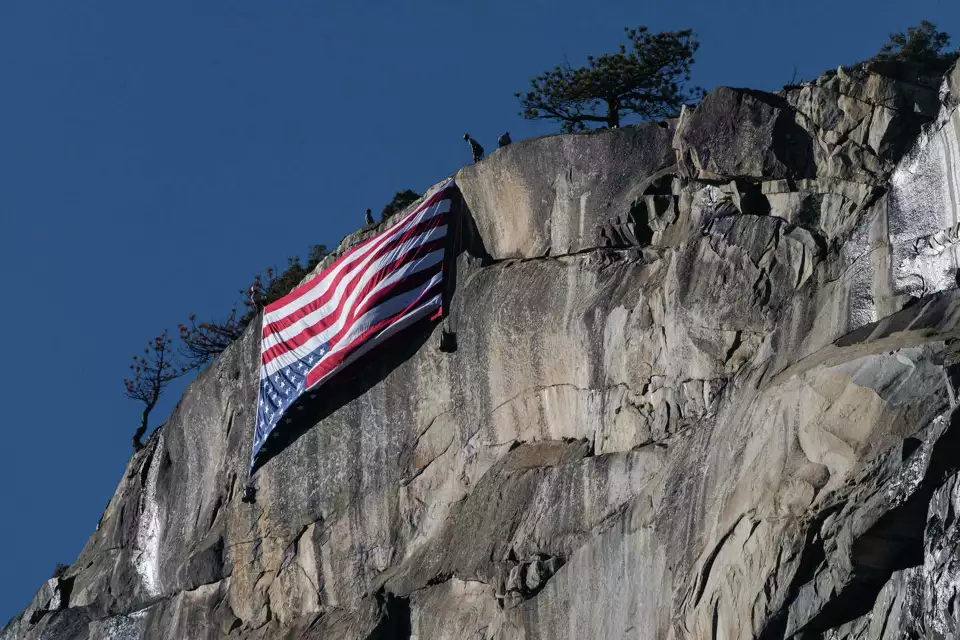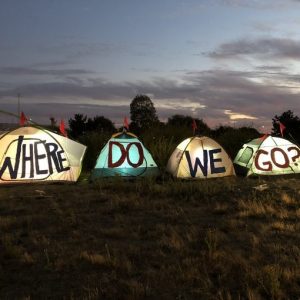It began with an email–or rather, a lack of one. Brian Gibbs was one of nearly a thousand workers whose livelihoods were compromised in the name of efficiency this February. About eight months into his role as an environmental educator at the Iowa Effigy Mounds National Monument, Gibbs was locked out of his government email without so much as a termination notice. His park housed sites significant to twenty indigenous communities, whose historical preservation of the land may be jeopardized if Park Rangers cannot keep up with the demands of tourism and ecological restoration.
Land is a tricky thing in the United States. What we’ve come to associate as public property has steadily been taken from the grasp of everyday Americans. When Woody Guthrie sang that ‘this land was made for you and me’ he really meant that this land was made for three–you, me, and the government. Our relationship with our land is already crowded and complicated, and it doesn’t help that how we interact with these territories has drastically changed since the beginning of President Trump’s second term.
The federal government owns approximately 650 million acres throughout the nation, roughly 30% of the available land in our country. This is divided among different federal agencies whose budgets are appropriated by Congress and can sum up to 1.9 billion dollars annually. The National Park Service, a department meant to understand and preserve American history and culture, gets the majority of this funding. This was Gibbs’ employer during his time as an educator, before the Trump Administration’s hiring freeze.
The National Park Service rakes in millions of dollars through tourism opportunities that affect local hotels and lodging, restaurants, retail shops, and recreational facilities. In 2023, our parks earned over 26.4 billion dollars from visitors. Cutting back on employment and labor opportunities means curtailing the revenue that these parks need in order to maintain our land. If the National Parks continue down the path of defunding and cutting employment, we can expect to see our land lose its value, not only physically and financially but also culturally.
Evidently, we’ve lost sight of what makes our land so unique and accessible to both United States residents and international tourists. The notion that our national parks are frozen in time, a fixed testament to the history of land in the United Sates, is misleading and ignorant. According to national park research, rising temperatures have affected the migratory patterns of wildlife, melted iconic glaciers, and sparked wildfires that have ripped through our parks. The impacts of climate change on our land have been immediate and far reaching, both compromising our ability to appreciate American monuments as well as preventing future generations from enjoying this public land. On top of concerns about the long-term effects of climate change, hiring freezes raise ethical concerns for land management in a time of great uncertainty. How will we continue to educate, advocate, and maintain our National Parks when shortages of staffing affect our ability to be physically present on the land?
While climate change isn’t directly mitigated by National Park employees, they act in the United States’ best interests as advocates, scholars, and custodians of our public land. They serve as climate change protectors, restoring wildlife habitats of endangered species, providing essential training and education to Americans, as well as preserving historical landmarks and archaeological sites–including those of indigenous Americans whose land, population and culture have been lost over time. Many of our parks are home to burial grounds and monuments that are thousands of years old, such as the Effigy Mounds National Park where Gibbs was formerly employed.
Not only does cutting National Park employment affect parks’ physical environments, it also has a broader impact on how the resources and services these parks offer are managed. We’re seeing the immediate effects of this across the nation. In Arkansas, the Hot Springs National Park has cut back their hours in light of the Trump Administration’s steep cuts to employment. Two states over, the Florissant Fossil Beds National Monument in Colorado has also chosen to cease services for two days out of the week. Campgrounds are announcing closures in light of the lack of available workers, with Yosemite closing camp resources for a full month during their busiest season. A lack of Rangers has prompted the mayor of Springdale to voice concerns about being unable to run Zion National Park without proper resources and workers.
While cutting federal spending has precedent, the context behind Trump’s slashing of National Park resources raises serious questions and concerns over public land management, including public safety and health consequences. In 2024 alone, twenty-seven natural disasters cost over a billion dollars each to address, with nearly 200 billion dollars spent combating these by the end of the year. Climate change has a significant impact on land preservation, especially when funding isn’t available to sustain existing resources and programs. When we cut back on the National Park Service’s vital programs and resources, we’re also compromising on the future of our parks.
Despite the administration softening their freeze by allowing an additional 7,700 seasonal positions to be filled, National Parks are still reeling from the aftermath of a devastating blow. Beginning application reviews and onboarding processes requires time that these parks no longer have. Without frontline staffers, visitors to the park will wait in long lines, experience shorter operating hours, and even be subject to dangerous conditions without proper guidance or access to medical treatment–Park Rangers often perform life-saving CPR and search and rescue.
How will the next generation of Americans understand the importance of this land when it no longer exists? Maintenance and disaster mitigation are expensive, yes, but compromising on the Indigenous land, history, and culture deeply intertwined with the United States National Parks is arguably an even greater cost. Not only are we making concessions on preserving communities that we intentionally displaced, but we’re also setting a dangerous precedent for how our public land will be affected by future federal government policies. We interact with our land daily throughout our lives–it plays a role in our education, relationships, communities, and consumption of products and services. It’s given us everything to us from our homes to our parks, and when asked to choose between efficiency through deconstruction or preservation through federal funding, the choice is simple.
Featured Image Source: SF Chronicle






Comments are closed.